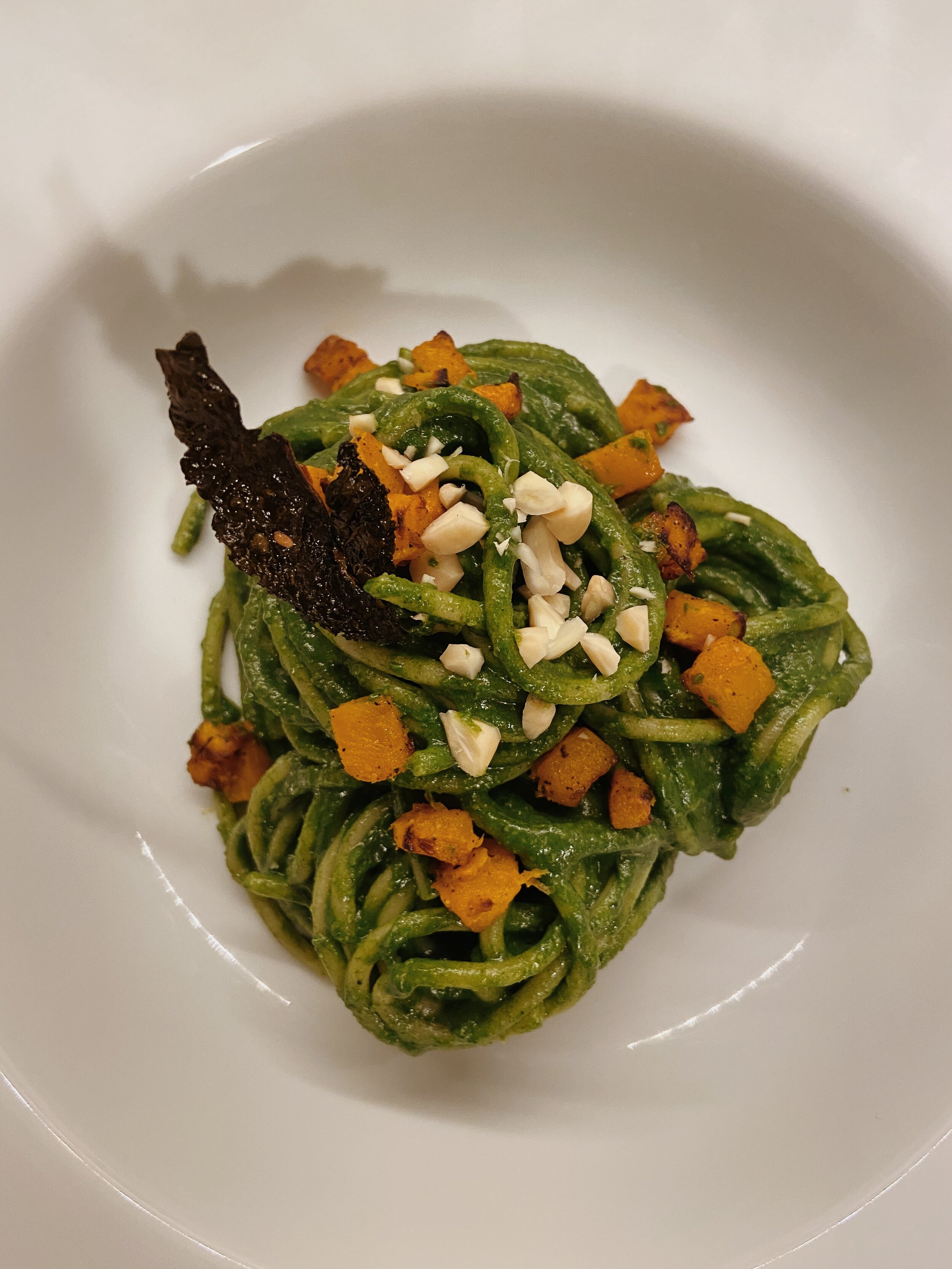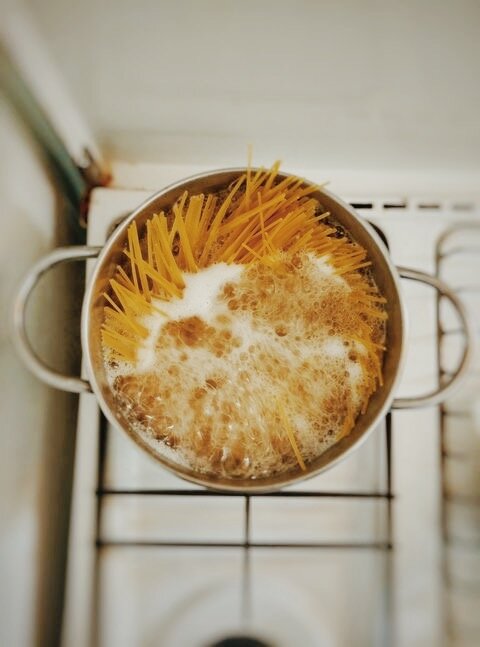Autumn memories of spaghetti with kale pesto and pumpkin cubes
Respecting the seasons means respecting the cycle of life, using what Nature itself decided to offer you. Unfortunately, it also means waiting. Waiting for the early days of summer if you want to eat zucchini at their best, or feel the real taste of tomatoes. Waiting for spring to come and lay fresh artichokes on your pasta, risotto, quiche, or frittata. Waiting for the first autumn leaves to fall together with some sweet pumpkin and crunchy, delicious black kale. And then winter. But truth is in winter everybody only waits for snow.
Well, you know what they say about waiting: it only makes things better. That’s why we all like running through our memories while we wait for something to come back. And that’s exactly what we aim to do with this recipe: go back to our autumn memories of spaghetti with kale pesto and pumpkin cubes, while we wait for leaves to start falling again. And we want you to know all the secrets that will make the real difference, so that you can try it on your own when it’ll be time. But, in case you are more like seize-the-moment people who just can’t wait, we suggest you taking some basil and fresh green beans and say welcome to Spring by reinventing the dish!
It doesn’t matter if you change the ingredients. And you can call it pesto even if it’s not the traditional alla genovese one, with basil and pine nuts. Literally, pestato means crushed, so pesto can be whichever sauce you obtain by crushing ingredients with a mortar or a mixer. You will simply need a green element, any nuts of your choice and some extra virgin olive oil. If you have these basics, the steps for making pesto will always be the same. But, for those of you who are patient enough and like earning things with time, these are the exact ones you need to follow for a perfect Autumn version for two.
1) Take some kale leaves (about 150 grams), wash them and dip them in boiling water for a few minutes, until blanched. Drain them and let them cool down a bit, so that you can more easily squeeze the exceeding water. In the meanwhile, take a handful of almonds (around ten, but leave some for later) and grate 20 grams of Parmigiano Reggiano. A mix of Parmigiano and aged Pecorino will also be fine. Just be careful to the overall taste: Pecorino is usually saltier than Parmigiano. Now, make sure you have some extra virgin olive oil at hand and take an immersion blender.
2) Before you start mixing, though, take a clean pot (or the one you cooked the kale in, it will just add some extra flavor!) and bring water to a boil. Add two handfuls of salt when the water starts boiling and remember this really is the only time in the cooking process that you can season the actual pasta itself. No salt on pasta after it has been cooked is one of the first things you learn as a kid. An Italian one, at least.
3) Tradition would ask for the next step to be done by hand, with a mortar, but we suggest you taking your kale leaves, almonds and cheese, put them all in the blender and let it reduce your physical efforts. Start making your pesto, by adding olive oil a filo and ad occhio (gradually and measuring “by eye”). Add one or two tablespoons of cooking water to reach the perfect texture.
4) Now, the pumpkin. We suggest you buying a half, or even a quarter. Remove the seeds, take the pulp and cut it into small cubes. Being sharp will help you cook it evenly and will make the dish look more appealing. Bake the cubes in the oven with a bit of salt, pepper and olive oil on top. 180° degrees for 30 minutes. You can add some rosemary if you like. Take them out the oven and let them cool down.
5) Now, let’s move on to the serious matter: take 160 grams of spaghetti (for a romantic gourmet dinner - go for more than 200 if you actually want to feed yourselves), put them in your boiling - and properly salted - water and stir to prevent them from sticking to the pot. Leaving them for a few seconds in the water - just like this,
will soften their bottom part, making stirring a lot easier. Stick to the time written on the packaging but don’t forget to taste every once in a while. 99% of Italians want their pasta to be al dente, but of course you can feel free to trust your palate. Just remember that you’ll be finishing your cooking together with the pesto, so it’s better if you don’t over cook it.
6) Move your kale pesto to a large pan (away from heat - otherwise you can use a large bowl) and add two tablespoons of cooking water - rich in starch - making a deliciously creamy sauce. A few seconds before the pasta is perfectly cooked, take it out and merge it with the pesto, gradually adding cooking water if needed. This step will complete your cooking process. Stir everything with passion: more energy means more starch release and more starch release means more creaminess.
7) Once finished your cooking in the pan or in the bowl, take a pasta dish and start plating, with the help of tongs and a big spoon. Try recreating the shape of a nest if you can. Let the pumpkin cubes fall down like snow on your spaghetti and then add some roughly chopped almonds as finishing touch. Your Autumn spaghetti al pesto will only be waiting for you to introduce them to their perfect companion: a glass of white, of course. Why not a firm, dry, light one like Falanghina? It would also be the perfect match for the over mentioned Spring version with basil and green beans, or even for some classic linguine al pesto genovese.
Finally, whichever alternative you will go for, just keep one essential thing in mind: always choose your pasta carefully. And we are not talking about shapes, we are talking about quality. You may think all pasta to be the same, but it’s not, and only choosing the right one will give soul to your dish. But this, dear ones, is another story and guess what?
You’ll have to wait for it! ;)


